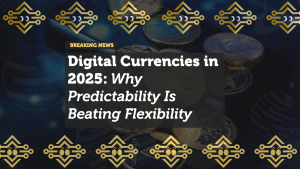
Vitalik Buterin Almost Joined Ripple: How A Missed Visa Changed Crypto History
In 2013, Vitalik Buterin was just a 19-year-old coder and Bitcoin Magazine writer, deeply immersed in the budding world of crypto.
While Bitcoin was capturing early imagination, Vitalik sensed that crypto could do far more than just send money. He wanted to explore programmable blockchains — a concept that was almost non-existent at the time.
At that moment, Ripple was one of the few funded and growing crypto startups experimenting with faster transactions, cross-border payments, and even early smart contract-like ideas.
Naturally, Vitalik applied to join their team.
The Job Offer: Ripple Wanted Vitalik
Recognizing his brilliance and potential, Ripple offered Vitalik a role in their U.S. offices.
However, there was a catch:
- The job was located in the United States.
- Vitalik, being Canadian-Russian, needed a U.S. work visa to officially come aboard.
The Visa Problem: A Small Hurdle, A Huge Consequence
Ripple, still in its early startup phase, didn’t have the legal infrastructure to fast-track visa applications.
They couldn’t get Vitalik’s visa processed in time, and without it, he legally couldn’t join.
Result: The opportunity fell through — a seemingly small bureaucratic hiccup that would end up changing crypto forever.
The Spark That Led to Ethereum
Blocked from joining Ripple, Vitalik began thinking deeper:
“Bitcoin is too limited. Ripple is innovative but still centralized.
What if I could build a platform where anyone could create decentralized applications?”
Fueled by that vision — and maybe a bit of frustration — Vitalik drafted the Ethereum whitepaper later in 2013, outlining:
- Smart contracts
- Decentralized applications (DApps)
- A truly programmable blockchain
The rest is history.
Ripple’s Reflection: The Opportunity That Slipped Away
Years later, Ripple executives reflected on what a huge missed opportunity this was.
Had Vitalik joined Ripple:
- Ripple might have evolved into the first smart contract platform.
- Ethereum might never have been created.
- Vitalik might be known today as “the Ripple guy” rather than the visionary founder of Ethereum.
A single missed visa application shifted the trajectory of what is now a $500+ billion industry.
Chart: Crypto Timeline – A Missed Visa That Changed Everything
| Year | Event |
|---|---|
| 2013 | Vitalik applies to Ripple; offer falls through |
| 2013 | Ethereum whitepaper written |
| 2015 | Ethereum network officially launched |
| 2025 | Ethereum valued at over $500 billion |
What If Vitalik Had Joined Ripple?
Imagine a parallel crypto universe where:
- Ripple becomes the first major smart contract platform.
- XRP and smart contracts dominate together.
- Ethereum never exists — or emerges much later from a different founder.
The entire blockchain landscape — DeFi, NFTs, DAOs — might look wildly different.
Instead, Vitalik’s independence allowed Ethereum to:
- Lead the ICO boom.
- Spawn the DeFi revolution.
- Lay the foundation for NFTs and Web3 applications.
Final Thoughts: Small Moments, Huge Ripples (Pun Intended)
Sometimes, it’s the smallest twists of fate — a missed job, a delayed visa — that have the biggest ripple effects.
Vitalik Buterin’s journey reminds us:
- Resilience matters — a closed door can spark a bigger idea.
- Visionaries create their own paths, even when early opportunities vanish.
- Crypto’s decentralized revolution might owe its very existence to one bureaucratic technicality.
Without that visa hiccup, Ethereum might not exist today — and the entire future of decentralized technology might look radically different.
Wild, right?
















